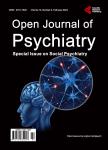Human photosynthesis, the ultimate answer to the long term mystery of Kleiber’s law or E = M<sup>3/4</sup>: Implication in the context of gerontology and neurodegenerative diseases
Human photosynthesis, the ultimate answer to the long term mystery of Kleiber’s law or E = M<sup>3/4</sup>: Implication in the context of gerontology and neurodegenerative diseases作者机构:Department of Anatomy First Moscow State Medical University Moscow Russian Federation Department of Neurological Disorders First Moscow State Medical University Moscow Russian Federation Institute of Physiologically Active Compounds Russian Academy of Sciences Chernogolovka Russian Federation Medical Center of the Administration of the President of the Republic of Kazakhstan Astana Kazakhstan Russian Academy of Sciences Institute of Theoretical and Experimental Biophysics Pushchino Russian Federation “GALLY” International Biomedical Research Consulting LLC San Antonio USA Human Photosynthesis Study Center Pulgas Pandas Sur México Institute of Molecular Medicine First Moscow State Medical University Moscow Russian Federation Department of Human Sciences Texas A&M University-Kingsville Kingsville USA
出 版 物:《Open Journal of Psychiatry》 (精神病学期刊(英文))
年 卷 期:2013年第3卷第4期
页 面:408-421页
学科分类:1002[医学-临床医学] 100214[医学-肿瘤学] 10[医学]
主 题:Human Photosynthesis Kleiber’s Law Geriatrics Gerontology Cardio- and Cerebrovascular Diseases Neurodegeneration Alzheimer Disease Retinopathy
摘 要:Kleiber’s Law or E = M3/4 is a mathematical expression known since 1932 that outlines the relationship between mass (biomass) and the use of energy. It is compelling because it supports a long standing observation that larger animals appear to use energy more efficiently than smaller ones. For example, an elephant’s weight is 200,000 times of a mouse, but uses only about 10,000 fold energy;thus a cat, having a mass of about 100 times of a mouse, only spends roughly 33 fold energy. In other words, the bigger you are, the less energy per gram of tissue you actually need to stay alive. Many facts pertaining to animal size call for a rational explanation. This paper takes into account that the fascinating relationship between mass and energy use for any living thing is governed strictly by a mathematical universal formula across all living species, operating in the tiniest of bacteria to the biggest of whales and sequoia tress. For the first time, we report a capacity for the mammal eukaryotic cell to split, break or dissociate water molecules through melanin. Even though E = M3/4 was discovered eight decades ago, no proper satisfactory explanation exists. Nevertheless, our multiyear detailed study on the “Human Photosynthesis or first found in the human retina and later in all eukaryotic cells, may finally unravel this mystery, namely, the bigger you are the more surface area you have to absorb electromagnetic radiation and the more potential exists to use that electromagnetic radiation spectra to perform work. We propose a future application of this theory in the context of human diseases, especially age-related disorders, such as retinopathy, cerebrovascular and Alzheimer disease and these implications may not only foster a better understanding of the pathobiology of these devastating diseases but also develop much more effective therapies in the foreseeable future.



